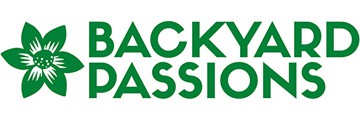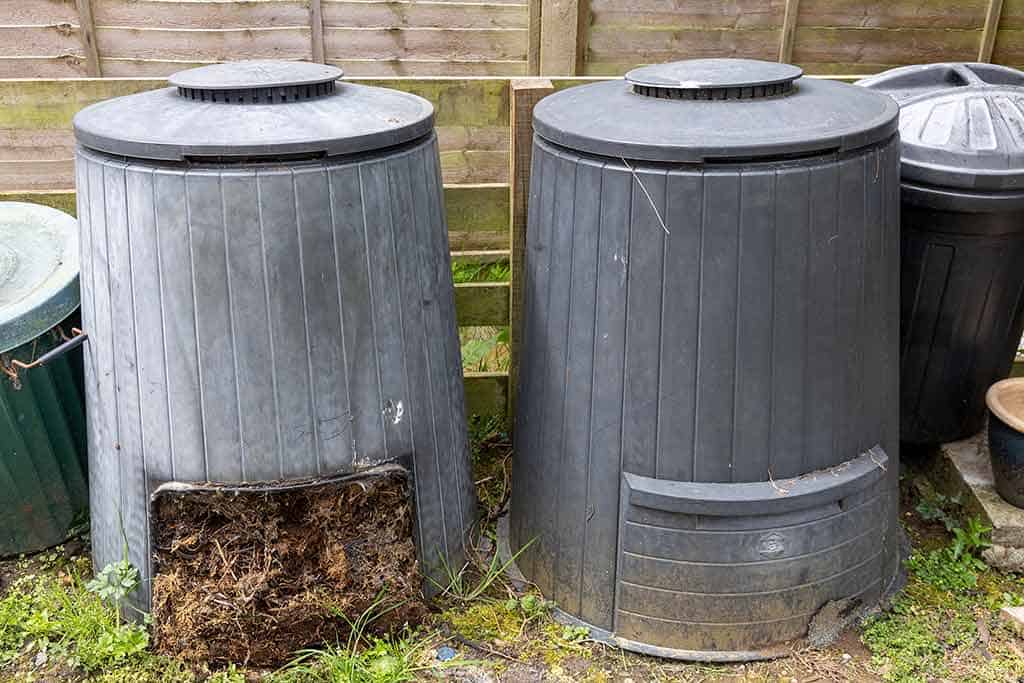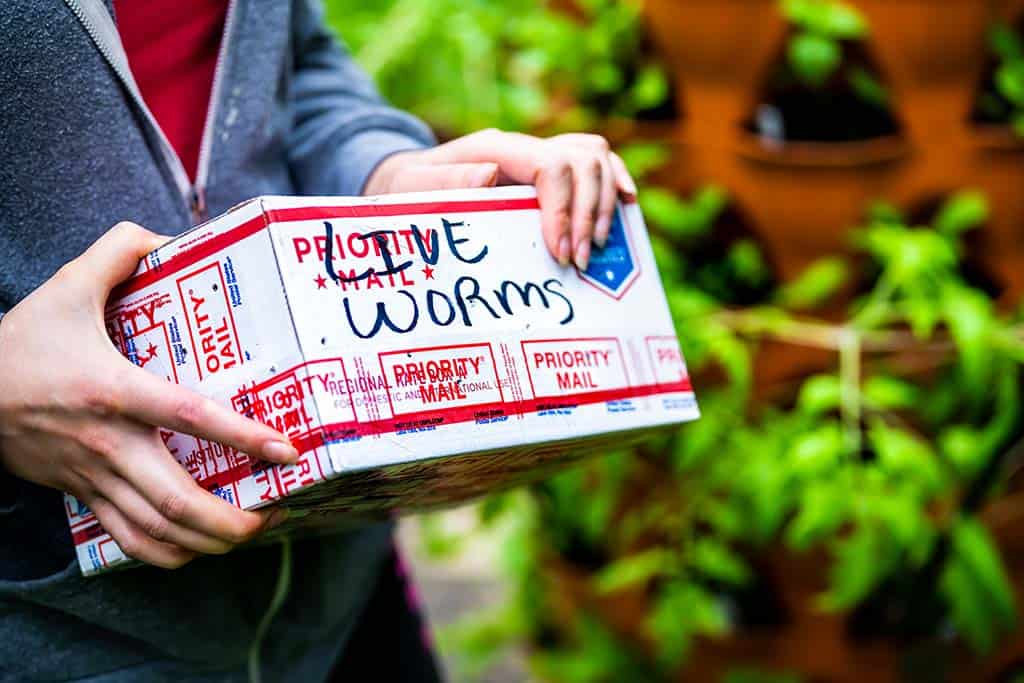Composting is a fantastic way to get rid of your food scraps and garden trimmings to improve the soil condition and provide fertilizer for plants and crops. An added benefit is that composting can eliminate the need for chemical plant foods which can be harmful to both people and pets. Therefore, composting not only reduces waste but also improves productivity, while helping to protect the environment and saving money!
Inexpensive and easy-to-do, composting has been embraced by many as an environmentally friendly solution that will help reduce their carbon footprint. Composting is an important task that needs to be learned by every gardener who wants to take care of and improve the quality of their soil in a sustainable way.
So, composting is an excellent way for gardeners to keep their plants healthy and flourishing. In this article, I’ll discuss what materials you can put in your compost bin and how to make a good pile.
Because you might have heard that there are a few different composting methods and that you need the right mix of browns and greens, don’t worry. Starting out with composting does not have to be complicated or difficult. Plus, you’ll see a terrific benefit for your plants and crops. So, even if you have no gardening experience, read on, and discover who easy it is to make your own compost.
What is compost
You probably have seen bags of compost sold in garden centers, you may even have bought some yourself, but what exactly is compost.
First, it’s not dirt like you can dig in your yard. As far as your plants are concerned it’s much, much better than plain dirt. While the soil in your yard will mainly consist of inorganic material, composts origins are 100% organic.
Compost is decayed organic material, the product of the composting process (more on that in just a minute). To the casual eye, it is difficult to identify the original organic material from which the compost was made. Compost has a deep brown or black in color and has a crumbly texture and an “earthy” smell.
Good compost is full of useful nutrients and beneficial microorganisms that promote healthy plant growth. Therefore, compost is used in gardening as a growing medium for seedlings and young plants.
Compost is also a terrific soil conditioner. As well as providing fertilizer for growing plants and crops, it can also benefit the soil structure. The improved soil structure can lead to better water retention in the soil and help prevent soil erosion.
When well made, compost is “black gold” for gardeners, providing the best start for any new plants.
The Benefits of Composting
- Composting can help improve soil fertility, soil structure, and water retention.
- Encourages the blooming of microorganisms that can break down kitchen and yard waste into rich compost, which is packed with plant nutrients.
- The need to buy artificial chemical plant fertilizers is reduced.
- Composting helps to reduce organic waste going to landfill, and therefore cutting methane emission, which is a greenhouse gas.
What is composting
Composting is the process by which organic materials, such as leaves, food scraps, and garden waste, are broken down into simpler organic and inorganic compounds. The final product is a humus-like material, which is called compost. A material that is useful and highly prized by knowledgeable gardeners.
In the backyard, composting is usually an aerobic process, which means it requires the presence of oxygen to work. It also requires the gardener to create a balanced mix of organic material, in terms of ‘greens’ and ‘browns’. But don’t worry, this is simple to do.
Greens are organics that include grass clippings, food scraps, and green leaves. All these are rich in nitrogen. Brown organic materials are more carbon-rich and include woody items like plant stalks, autumn leaves, wood chips, cardboard, and paper.
In terms of composting efficiency, the ideal ratio of carbon to nitrogen in the mix is 25:1. In practice, this can be achieved by mixing equal volumes of greens and browns, so there’s no complicated measuring that you need to do.
In addition to carbon and nitrogen, efficient composting requires the presence of oxygen and water. Microorganisms use all four ingredients in the transformative process of composting. The microorganisms include Bacteria, Actinobacteria, Fungi, Protozoa, and Rotifers.
Earthworms can also play a part in the compost pile. They provide a two-fold benefit in composting. They eat and digest decaying material, pooping them as “worm castings”. They also help improve the aeration and drainage by making tunnels as they move through the compost. In fact, worms can be used as the backbone of a form of composting known as worm composting or vermicomposting, the final product is known as vermicompost.
How to start composting
Composting can be as simple as collecting the organic waste from your kitchen and yard and digging it back into the soil. Organic farmers often do this. A green manure crop will be grown and then incorporated back into the soil to provide nitrogen for the following crop.
Over time, the composting process will naturally turn your food and gardening waste into a dark soil-like material. The compost will help improve your soil and the nutrients it contains will be used by your plants, fruit, and vegetable crops.
However, there are alternatives to just digging raw kitchen and yard scraps into your soil. You could make a compost pile or use a composting bin. Most gardeners usually choose a bin, since using a compost bin provides a few advantages over a compost pile.
Compost in a bin will not need to be turned as often as the contents of a pile left on the ground. Probably more of a consideration for most spouses of backyard gardeners is that using a composting bin keeps the yard looking nice and tidy.
How to Use a Composting Bin
Composting can be done on a large or small scale. Although there is an advantage in using a large composting bin. For example, the process can be much faster because the larger volume of material will help retain the heat generated by microbes in the compost.
So, if you have space in your yard and a plentiful supply of waste, choose a larger-sized composting bin. You’ll be rewarded with more compost much sooner.
Regular composting bins have an open bottom and sit directly on the soil. You can also use a rotating compost tumbler. It has the advantage that you can easily mix your compost simply by frequently rotating the composter tumbler. With a regular composting bin, the composting material needs to be emptied out, mixed with a digging fork, then returned to the bin for the composting process to continue.
If you’re just starting out with composting, a regular composting bin is probably the way to go. The open base placed on bare earth will enable worms and other microorganisms in the dirt to migrate into the compost and help the composting process.
I like to fork over the earth first to open the structure of the dirt, add the composting bin on top, and then create a base of loose organic material in the base of the bin to aid drainage and aeration. The material can be twigs, shredded paper/cardboard, or straw.
The browns and greens can go on top of the base, and ideally in alternating layers. However, unless you store some browns, you’ll find it can be difficult to get the perfect layered structure. You’ll notice this to be the case when mowing your lawn and you have an abundance of grass clipping to put into the composting bin. You could end up with a huge layer of nothing but grass clippings.
This is where I find having an office paper shredder helps with my gardening. Shredded paper can be mixed in with the clippings, which helps avoid having the grass clippings form a dark, wet mat that will take much longer to break down. If you have any straw or sawdust/wood shavings available, they work well as “browns” that can offset adding an abundance of “greens” to the bin.
How to Speed up the Composting Process
To speed up the decomposition of your kitchen and yard waste, add a little soil from your yard every few inches to your composting bin. As an alternative, you could add some horse or cow manure. You’ll be adding beneficial microbes into the compost mix. Those hungry “mouths” will accelerate the decomposition.
Alternatively, you can buy Compost Starter or Compost Accelerator. It will inoculate your compost with a suitable microbial mix that will help activate the composting process and speed up everything.
You also need to ensure the material is a little loose, air needs to be able to circulate through the material along with a little moisture.
Why Watering your Compost Bin is a good idea?
Note I said, “a little moisture” in the previous section. You need to avoid conditions where the material is too wet or even too dry. In both of those situations, the organic waste will not decompose into compost and therefore hold up the composting process.
Watering is also important if your bin has a lid or you’re using an open-top bin in a drier climate.
If you are using an open composting bin, try covering it to help it retain moisture. When I was a boy, my father built a large compost bin out of timber and covered it with scraps of old carpet. Once he even recovered a large sheet of plywood from a dumpster and used that as a cover for the bin.
Essentially, use whatever you have. It’ll help keep moisture in the compost but also avoids overwatering if you have a wet climate. Added advantages of a cover are that it will help keep unwanted guests out and help insulate the bin to keep in heat generated by microbes.
How Often to Turn Compost for Better Aeration?
Of course, you’ll have to do some work occasionally, other than adding new material for composting. Get out your digging fork, pitchfork, or shovel and turn your compost every few weeks.
You want to get it well mixed and aerated, which helps to keep up oxygen levels and the microorganism healthy. By “working” your composting bin, you’ll speed up the composting process. The extra effort will ensure you have dark fertilizer pack compost much sooner than if you left the bin alone.
Without putting in some work, making your Gardeners Black Gold might take one, two, or even three years. On average, with a small amount of neglect, your composting bin will have done its work in 6 to 12 months.
But under ideal conditions, including the addition of an accelerator, and regular turning of the material, you could have a supply of compost in as little as two months.
What to put in a composting bin

You can convert almost any organic matter into nutrient-rich compost. But when you’re making your own compost, you want to use organic matter that will decompose quickly, is safe, and will not attract vermin.
Typical composting materials recommended by gardeners include leaves, grass clippings, and plant trimmings from the yard, plus manure, fruit peelings, and vegetable waste. However, cardboard, paper, and wood chippings can also be included.
Here is a list of Green and Brown materials you can put in your compost bin. Later, I’ll also list what you should not put in your compost bin.
| GREENS | BROWNS |
|---|---|
| Annual and perennial plant trimmings | Bark (chipped) |
| Annual weeds (before they’ve set seeds) | Corn stalks |
| Coffee grounds | Corrugated cardboard (torn into small pieces) |
| Cut flowers | Cotton fabric |
| Eggshells | Farmyard manure |
| Fruit scraps | Feathers |
| Garden and house plants | Fur |
| Grass clippings | Hair |
| Teabags and leaves | Hay |
| Vegetable scraps | Leaves (Fall leaves – Avoid adding leaves from diseased plants) |
| Seaweed | Nutshells |
| Paper (coffee filters, napkins, newspaper, printer paper) | |
| Pet cage bedding | |
| Pine needles | |
| Sawdust | |
| Straw- (sprinkled thinly to avoid clumping) | |
| Twigs | |
| Wood ashes – (sprinkled thinly to avoid clumping) | |
| Wood chippings | |
| Wool fabric | |
| Yard trimmings (chopped or shredded) |
What NOT to put in a composting bin
| Bones | Large branches (chip them first) |
| Cat and Dog litter | Meat and fish scraps |
| Coal ash | Metal |
| Cooked food with oil, dairy, fish, or meat | Nappies |
| Dairy products | Oil, butter, and grease |
| Diseased plants and leaves | Plastics |
| Glass | Synthetic fabric |
| Human faeces | Weeds that have set seed |
Why Composting is Good for Gardener and The Environment
Composting is an effective way of recycling kitchen scraps and gardening waste. Not only does it produce a product that improves the soil and provides fertilizer for plants, but it’s an environmentally friendly way of dealing with the waste and helps in the fight against global warming.
Making your own compost is far better than buying bags of peat-based compost from garden centers. For a start, peat and compost are completely different things. Peat is a natural product that is formed as new layers of surface vegetation bury dead material.
Substantial amounts of peat can accumulate over thousands of years under boggy water-logged conditions, where the exclusion of oxygen prevents further decomposition. These large reserves of peat can be extracted and used either as a low-grade fuel or as a popular substitute for compost.
However, whereas homemade compost can easily be replenished by adding more waste to a composting bin, once a peat bog has been excavated it might take thousands of years to renew or be lost forever.
The world’s natural peat bogs or wetlands are important carbon stores. When they’re drained, the carbon is released back into the atmosphere where it contributes to global warming.
Aerobic composting of food and gardening waste can help reduce greenhouse gas emissions, such as methane.
So, how does composting reduce methane?
The key is the ensure composting is aerobic, the type that uses oxygen from the air. This type of composting does not produce methane.
However, when organic matter is entombed in landfill sites the material decays anaerobically, without oxygen. It’s this type of decay that produces methane, and which we need to avoid since methane is twenty-six times more effective at heating the atmosphere than carbon dioxide.
You can see, composting delivers huge advantages for the gardener and the environment.
Conclusion
As you can see, you don’t need to have lots of exceptional garden skills, so-called “Green Fingers”, or need to buy expensive equipment to establish a regular supply of your own compost.
Everything you need to put into the composting bin you already have in your garden and kitchen. You simply need to remember to put these things into the composting bin. Then it’s just a case of keeping the material moist and well mixed. Turning the compost every few weeks will help make sure the material is well mixed and aerated for all the microorganisms to do their job to decay organic waste into useful compost for gardening.
Not only will your backyard plants and crops benefit from your composting efforts, so will the environment.



